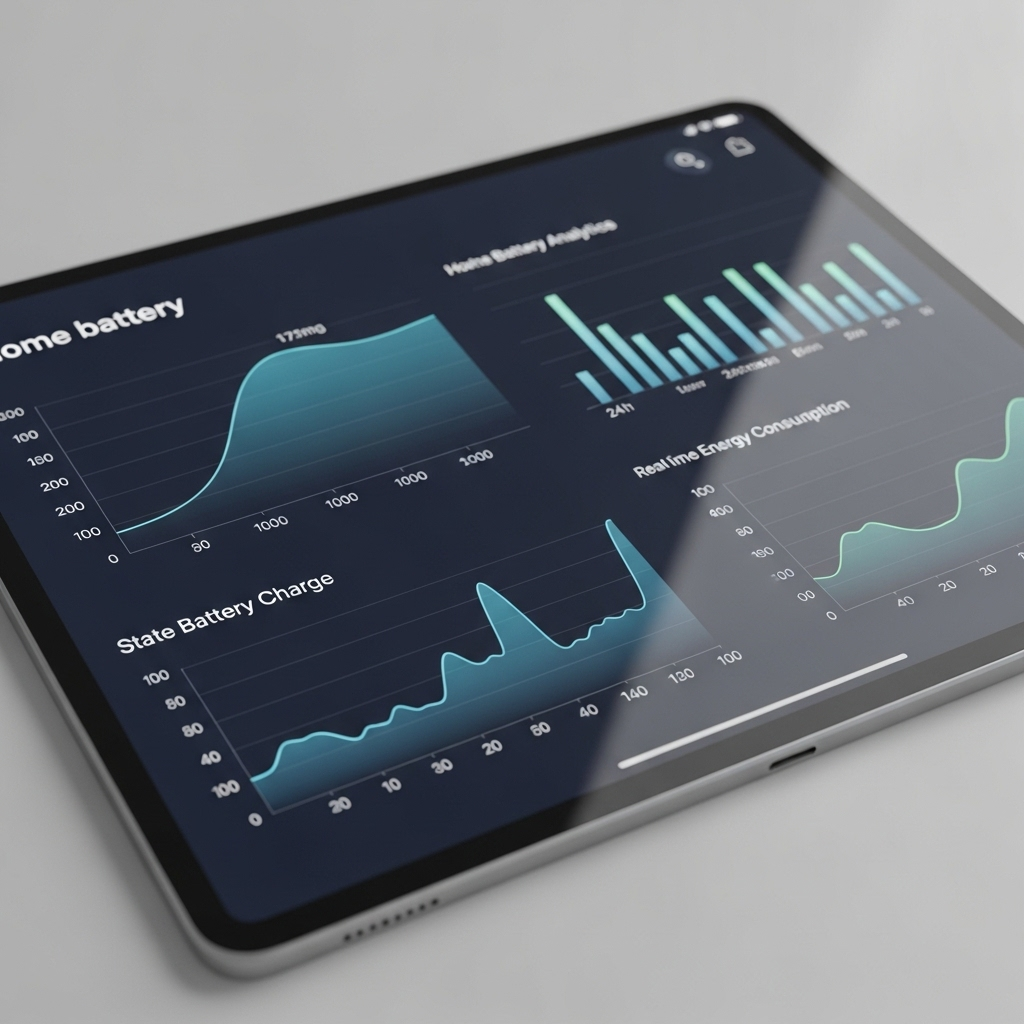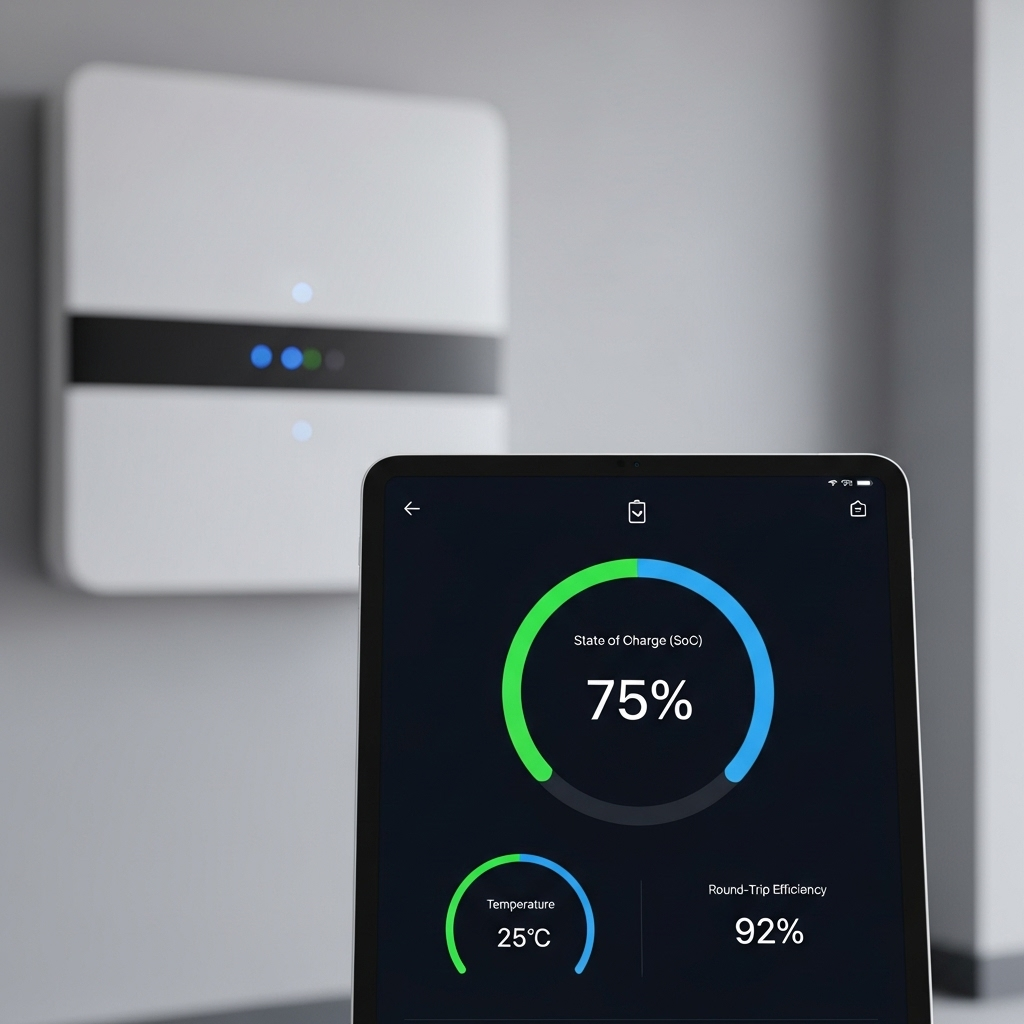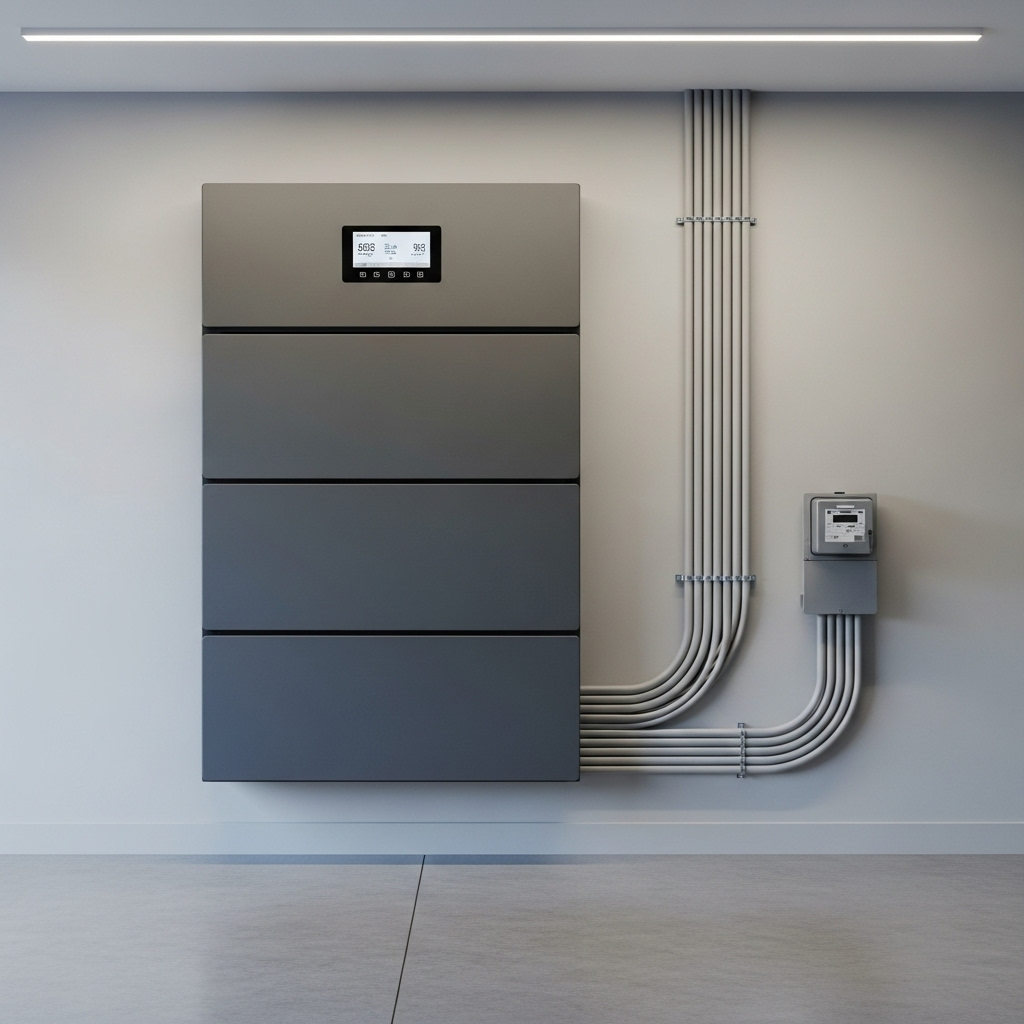Understanding your home energy system is the first step toward optimizing it. While most home battery systems come with a standard application, the real power lies in accessing raw data. Advanced home battery monitors with Application Programming Interface (API) exports provide this capability. They offer a direct line to your system's performance data, allowing for sophisticated smart home energy management and detailed performance tracking.
Why Monitoring Your Home Battery Is Non-Negotiable
Gaining deep insight into your battery's operation is fundamental to maximizing its value and lifespan. Standard dashboards provide a useful overview, but the most significant optimizations come from analyzing detailed, granular data over time. This level of analysis helps you make informed decisions about your energy consumption.
Beyond Basic Dashboards
Default manufacturer apps are designed for simplicity, often showing just the current state of charge and power flow. This is helpful, but it doesn't tell the whole story. To truly manage your energy assets, you need access to the underlying data points. This includes historical performance, efficiency ratings, and cell-level information that can reveal trends and potential issues before they become significant problems.
The Importance of Granular Data
Key performance indicators are vital for assessing battery health. As detailed in this comprehensive guide to solar storage performance, metrics like Depth of Discharge (DoD) and cycle count directly influence your battery's longevity. A dedicated monitoring system allows you to track these variables precisely. You can ensure your settings align with best practices for extending battery life, protecting your investment for years to come.
Unlocking System Potential
With detailed data, you can fine-tune your energy strategy. By analyzing your consumption patterns against your solar generation and battery state, you can optimize self-consumption. This means using more of your own generated solar power and relying less on the grid. The result is often lower electricity bills and a greater sense of energy independence.
The Power of API Exports in Energy Management
An API is a powerful tool that transforms your battery from a simple storage device into an integrated component of your smart home. It allows different software systems to communicate, opening up a world of customization and automation that standard apps cannot offer.
What Is an API and Why Should You Care?
Think of an API as a secure gateway to your battery's data. It allows external applications—like home automation platforms or data analysis tools—to request and receive information directly from your energy storage system. Instead of being limited to the manufacturer's app, you can use your data in any way you see fit, from building custom displays to creating complex automated workflows.
Custom Dashboards and Data Logging
One of the most popular uses for an API is creating custom monitoring dashboards. Using platforms like Home Assistant or Grafana, you can visualize your energy data in exactly the way you want. Track long-term trends, compare performance across different seasons, and build a complete picture of your home's energy ecosystem. This is essential for anyone serious about home battery data logging.
Smart Home Integration
APIs are the bridge to true smart home energy management. You can create rules that automatically adjust your home's energy use based on real-time battery data. For instance, you could program your system to heat your water tank when the battery is full and solar generation is high. As noted in a report by the IEA, intelligent software can interact with smart appliances to shape electricity consumption. The Next Generation Wind and Solar Power report highlights how this increases self-consumption and reduces reverse power flows to the grid.
Evaluating Monitoring Apps with API Functionality
When choosing a home battery monitoring system, the quality of its API is a critical feature. Not all APIs are created equal. Some offer rich, real-time data streams, while others provide more limited, delayed access. Here are the key features to look for.
Key Features to Compare
A robust monitoring solution should offer a well-documented API that is easy for developers and hobbyists to use. Look for systems that provide both local and cloud-based access. Local access is faster and more reliable, while cloud access offers convenience and remote management. The data granularity is also important; the more frequent the data points, the more accurate your analysis will be.
A Comparison of API Approaches
The table below outlines common features found in leading home battery monitoring systems. When evaluating options, consider which combination of features best suits your technical comfort level and your energy management goals.
| Feature | Local API (e.g., Local Push/Pull) | Cloud API (e.g., REST) |
|---|---|---|
| Data Access Speed | Near Real-Time | Delayed (seconds to minutes) |
| Internet Dependency | Low (operates on your local network) | High (requires an active internet connection) |
| Ease of Setup | Can be more complex | Often simpler with official libraries |
| Privacy | High (data stays on your network) | Lower (data is sent to a third party) |
| Best For | Home Assistant, DIY projects | Third-party app integrations, remote access |
Integration with Energy Platforms
The ultimate goal of using an API is integration. A good system will have pre-built integrations with major smart home platforms. This simplifies the process of connecting your battery to your other smart devices. The International Renewable Energy Agency (IRENA) points out in its Innovation Outlook on Smart Charging that combining smart energy services is the future. An open API makes your system ready for such future integrations, including vehicle-to-grid (V2G) applications.
Take Control of Your Energy Data
Your home battery system is a significant investment in your energy future. By choosing a system with a powerful and accessible API, you are equipping yourself with the tools needed for advanced battery performance monitoring. You can move beyond simple observation and start actively managing your energy resources. This proactive approach not only helps you save money but also deepens your understanding of your personal energy landscape, paving the way toward true energy independence. The IEA's Clean Energy Innovation report emphasizes the growing consumer value in applications like home battery storage, and direct data access is a key part of that value.
Disclaimer: This article provides general information and does not constitute financial or technical advice. Consult with a qualified professional before making any decisions regarding your energy system.
Frequently Asked Questions
What key metrics should I track for my home battery?
You should focus on State of Charge (SoC), Depth of Discharge (DoD), cycle count, battery temperature, and overall energy throughput. Tracking these metrics provides a clear picture of your battery's health and usage patterns, helping you optimize its performance and lifespan.
Do I need to be a programmer to use a battery monitor's API?
Not necessarily. While programming skills are helpful for custom projects, many smart home platforms have pre-built integrations that handle the technical details for you. These platforms offer user-friendly interfaces for creating dashboards and automations without writing any code.
How can API data help me save money?
API data enables you to automate your energy consumption to align with time-of-use electricity rates. You can program your system to charge the battery when grid electricity is cheapest and discharge it during expensive peak hours. It also helps you maximize the use of your own solar power, further reducing your reliance on the grid and lowering your bills.





Leave a comment
All comments are moderated before being published.
This site is protected by hCaptcha and the hCaptcha Privacy Policy and Terms of Service apply.